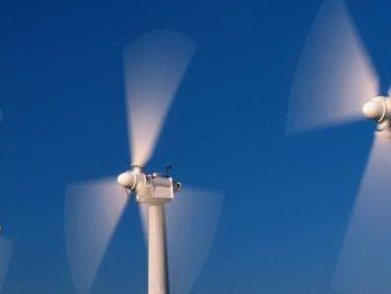A new research project, IL-WIND, will develop ionic-liquid based lubricants for wind turbines.
Ionic liquids are salts that are liquid at room temperature; they are slow evaporating, can stand high temperatures and have good tribological properties. That makes them ideal substances for lubricants, says Marc Uerdingen, coordinator of IL-WIND at Merck KGaA in Darmstadt and responsible for research and development in this project.
Moreover, ionic liquids are very resistant. “We are developing lubricants for offshore wind turbines,” he explains. “These huge high-performance turbines have to tolerate very harsh conditions: strong torsional moments and air that contains corrosive sea water.” The researchers will focus on ionic liquids formulations which are less hygroscopic as well as corrosive and therefore cope better with the conditions in offshore wind parks.
The liquid salts have another, important advantage: They conduct electricity. “While the turbine rotates, momentary voltage peaks occasionally occur. Ionic liquids could divert these voltage peaks and prevent damages inside the bearing.”
Unfortunately, ionic liquids are relatively expensive. “Therefore we are also trying to develop lubricants on a common oil basis with ionic liquid as additives,” Uerdingen says. This way, the researchers hope to achieve the same effects with using less amounts of the expensive substance.
The idea to use ionic liquids for lubricants is not completely new, but “what is special about our project,” Uerdingen says,” is that we are approaching the aim from two point of views, from the chemical side and from the mechanical engineering side.”Merck is coordinating the chemistry, Schaeffler Technologies GmbH & Co. KG is responsible for the mechanical engineering. Other partners include the University of Erlangen-Nueremberg chairs of Reaction Engineering, Technical Thermodynamics and Process Technology & Machinery, and REpower Systems AG.
The German Federal Ministry of Education and Research (BMBF) is providing funding for the project. It is scheduled to run for three years and has a total volume of just under EUR 2 million.
- Merck KGAa, Darmstadt, Germany





When the lubricant made ionic doesn’t it cause to increase the corrosive tare of the metals which are in contact ?
Wow, 6 years have passed away, wondering what this project lead to?